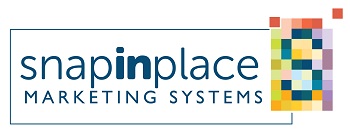Life is either a continuous process improvement, or a terminal disease that we will all die from anyways.
— Randy J. Hinrichs
To bring your marketing operations together, dont force any kind of marketing automation solution on your organization without first running a marketing workflow simulation exercise. Heres a hands-on reason why.
 I had tried hand signals. May be he would understand if I went for smoke signals. Thats how it is sometimes when youre trying to bridge two distinct cultures. Even for competent translators, there are times when words fail and thought transmission jams. Interpreting between marketing and IT is no different.
I had tried hand signals. May be he would understand if I went for smoke signals. Thats how it is sometimes when youre trying to bridge two distinct cultures. Even for competent translators, there are times when words fail and thought transmission jams. Interpreting between marketing and IT is no different.
This was a discussion I was having with a senior manager in IT. For nearly an hour we had been discussing how to ensure that the global marketing organization, which I represented, embraced a new, shiny workflow management, online publishing, project tracking tool called SharePoint. Our technicians had been working for months to procure this collaborative portal application.
They had configured its basic rocket booster functionality and the launch date was approaching. Now they were looking for some guinea pigs to test it on, and the reception to this request had been at best chilly across the entire company. That looked to me like an opportunity for some serious VIP treatment, if I volunteered my department. But things were not turning out as desired.
Marketers Like Bookies Dont Skydive
Marketers may be known for coming up with innovative ideas to position their companies in the marketplace but, frankly, theyre a rather conservative bunch when it comes to adopting new technology. In this sense, theyre not much different from bookkeepers: risk-averse.
Even while being first to volunteer, my marketing colleagues were no adventurers. Theirs was not a desire to experiment. It was a demand to fulfill a need for greater operational efficiency. And this envisioned operation process they had yet to create a name for.
But Id come to understand it thoroughly after working with them for several months, and I knew that the best way to introduce SharePoint to them would be by showing them how the tool could simplify what seemed to them today like a currently convoluted business process and bring about the dawning of a new age.
This however would require running a small-scale simulation of the new vision with key marketing managers worldwide. For some reason the concept did not resonate with the IT manager running the SharePoint initiative.
In his mind and that of his superior the best approach was to follow a standard training program as proposed by one of the consultants that the IT organization had hired to guide end-users in adopting the tool.
The standard approach was to sequentially and progressively introduce more and more of the features available out-of-the-box in the application.
I had warned against doing this and the advice had not been heeded. So, although wed already dedicated 2 hours to training very busy managers, whose coming together had been an achievement in itself (practically a miracle!), the results remained nothing short of disastrous.
“I dont care that SharePoint lets us instant message each other!” said one of the marketers. ” Who cares about that? I can use Yahoo any time. Why do we need this feature?”
Or, how about this one?
“Um, can you tell me again what that Back button is for?
Bells and Whistles are Noisy
 When the focus is on features and not on process, features fail to flourish. Users forget them. But before rolling out new software, the vital move for IT is to build part of the business process as a prototype a simulation of the critical steps that a user team takes to complete one crucial phase of its entire operation with the tool under examination.
When the focus is on features and not on process, features fail to flourish. Users forget them. But before rolling out new software, the vital move for IT is to build part of the business process as a prototype a simulation of the critical steps that a user team takes to complete one crucial phase of its entire operation with the tool under examination.
Then, gathering the team leaders for training, the trainer should guide everyone procedurally through a role playing exercise time and again, until the tool becomes invisible as the process comes alive before them.
This isnt rocket science, really. So, why the need for smoke signals? Well, he had come from Europe and may be he was jetlagged at the time. Honestly, however, I think IT simply found the approach too unorthodox and time-consuming.
“Do you know how much preparation it takes to create even a small marketing workflow simulation?” he seemed to be saying to me with his weary eyes.
Yes, in fact I do. But if you want as a technician to sell a solution in-house, then there is nothing unorthodox about building a suitable, tangible business process mini-replica for your internal customers to try out.
Building prototypes is common fare in the sale of complicated software packages. Ask any successful sales rep. It is work that lays out a clear stairway for users to climb and, often, once theyve reached a higher level through it they wont want to come back down.
Alternatively if youre a business manager, then you should ask for a marketing workflow simulation of any critical component of your business process as part of any demonstration of functionality for any tool that IT is considering having you and your team adopt.
Even if you needed to communicate with those technical associates through smoke signals to obtain it, that will be better smoke that the one rising from the ruins of a botched software implementation project that you never believed in.
Return to Marketing Automation from Marketing Workflow Simulation
